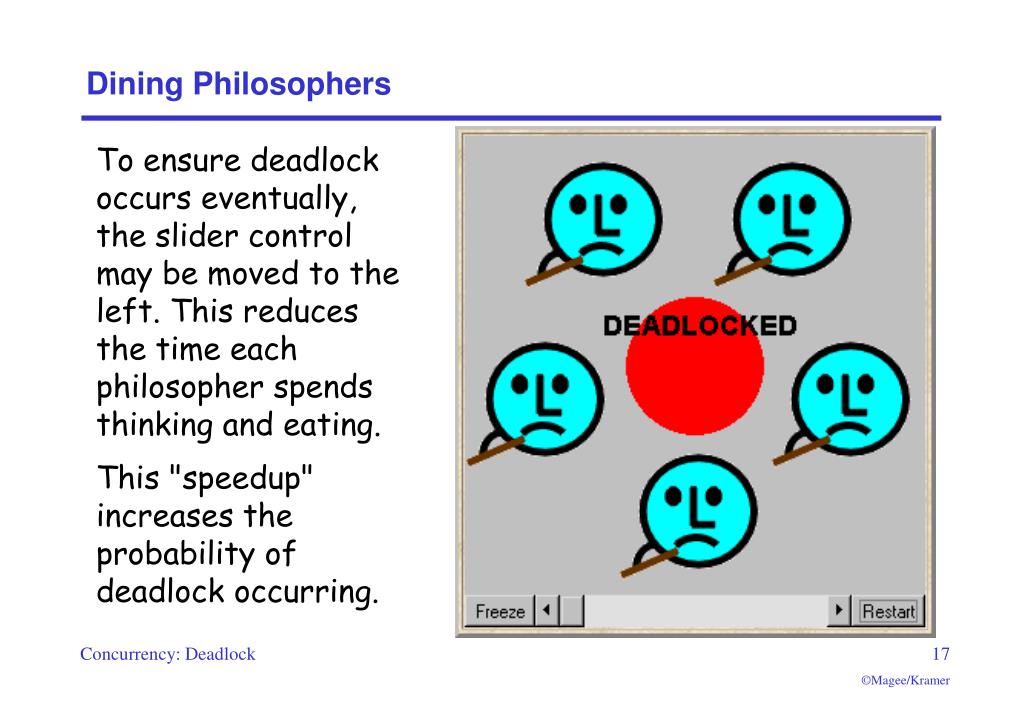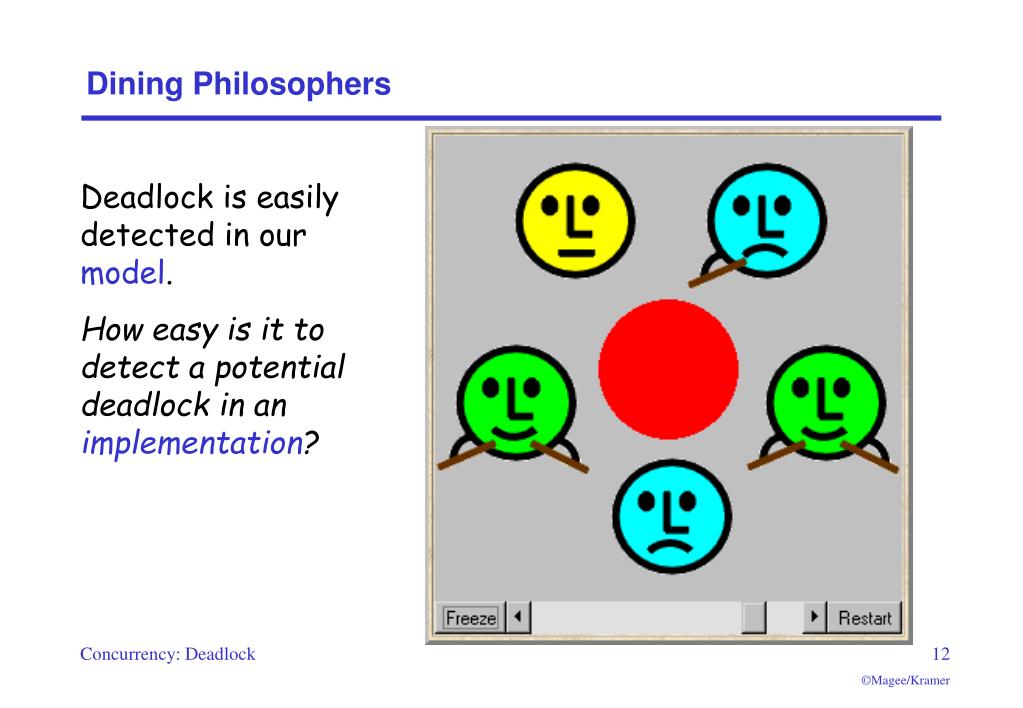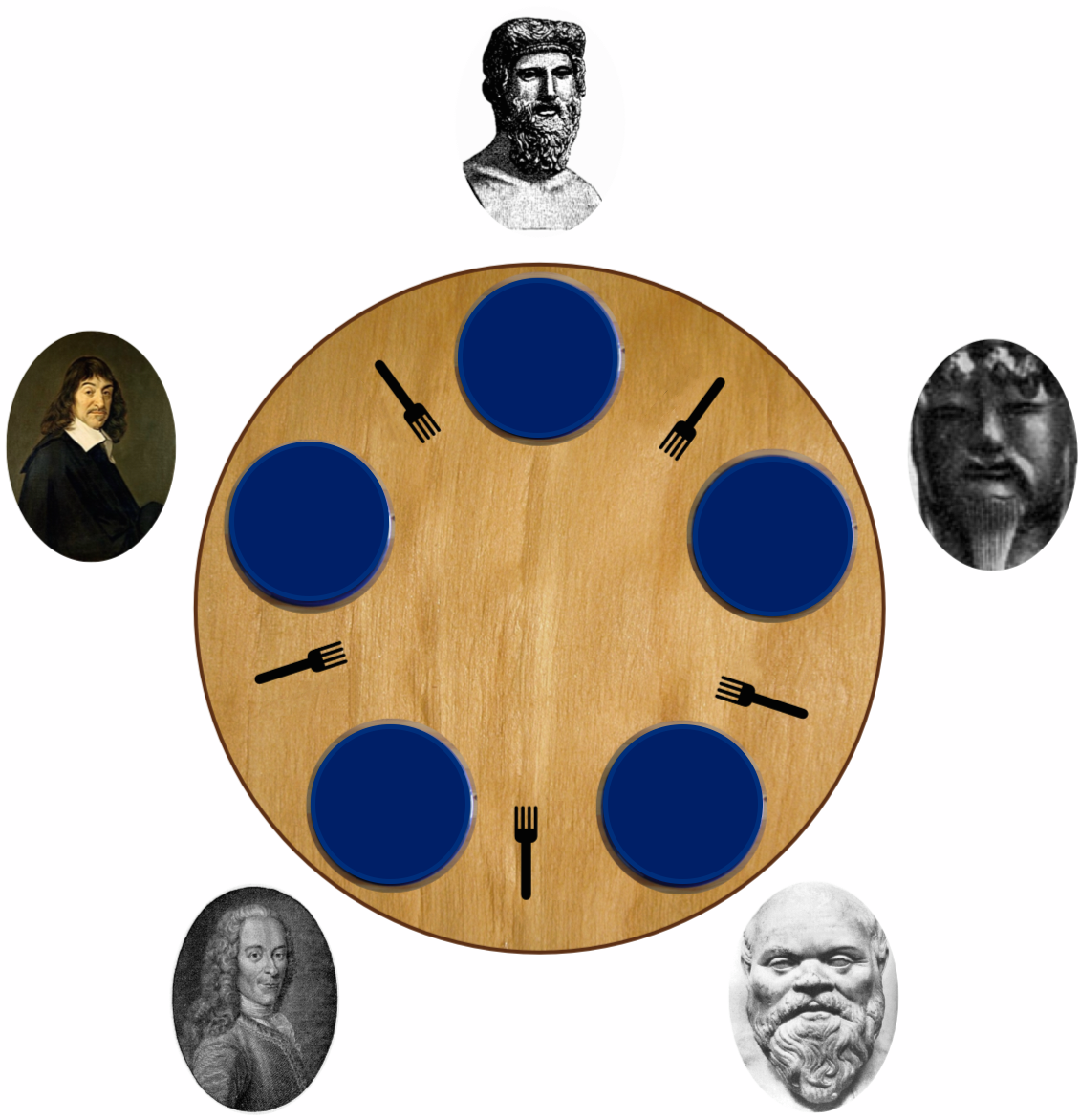

parking to wait for 0x00000007ac3b27a8 (a .ReentrantLock$NonfairSync)

0x00000007ac3b27a8 (a .ReentrantLock$NonfairSync) The Dining Philosophers problem (Dijkstra, 1968a) is a classic concurrent-programming problem in which the deadlock is not quite so apparent as in the. parking to wait for 0x00000007ac3b27d8 (a .ReentrantLock$NonfairSync) Deadlock is the permanent blocking of two or more threads based on four necessary conditions. "Thread-3" prio=6 tid=0x0000000007465800 nid=0x158f58 waiting on condition Dining Philosophers Problem and Deadlock ¶ The previous chapter introduced the concept of deadlock. parking to wait for 0x00000007ac3b2718 (a .ReentrantLock$NonfairSync)Īt .LockSupport.park(Unknown Source)Īt .AbstractQueuedSynchronizer.parkAndCheckInterrupt(Unknown Source)Īt .AbstractQueuedSynchronizer.acquireQueued(Unknown Source)Īt .AbstractQueuedSynchronizer.acquire(Unknown Source)Īt .ReentrantLock$NonfairSync.lock(Unknown Source)Īt .ReentrantLock.lock(Unknown Source)Īt .pickUpRightChopstick(DiningPhilosophers.java:110)Īt .run(DiningPhilosophers.java:78) Exampleīelow is a thread dump of a JVM instance from a dining philosopher problem which was suffering from a circular deadlock problem.
#Dining philosophers problem java deadlock code
The code has to be re-engineered to break this circular deadlock pattern. Since each thread is holding a lock, for which other thread waits upon – this will ultimately result in a circular deadlock. “Thread-3” is holding lock L4 and waiting on lock L1.“Thread-2” is holding lock 元 and waiting on lock L4.“Thread-1” is holding lock L2 and waiting on lock 元.Each philosopher, before starting to eat, invoke the operation pickup. “Thread-0” is holding lock L1 and waiting on lock L2. Problem description: The monitor dining controls the distribution of the chopsticks.

Once deadlock happens, the only way to recover from the situation is to restart JVM. Circular deadlock is a variant of deadlock problem. Dining philosophers problem will result in circular deadlock problem. In this way, deadlocks can be avoided.Dining Philosophers is a classic computer science problem that happens in concurrent programming. So, one philosopher can start eating and eventually, two chopsticks will be available. That way, if all the four philosophers pick up four chopsticks, there will be one chopstick left on the table. Allow only four philosophers to sit at the table.The Dining Philosophers Problem involves a round table with five philosophers sitting around it. The goal is to design a protocol that allows the philosophers to eat without encountering deadlock. A philosopher must be allowed to pick up the chopsticks only if both the left and right chopsticks are available. This repository contains the solution to the Dining Philosophers Problem, a classic problem in deadlock management. Consider the basic FSP description of the Dining Philosophers problem.After eating, he puts both the chopsticks down.īut if all five philosophers are hungry simultaneously, and each of them pickup one chopstick, then a deadlock situation occurs because they will be waiting for another chopstick forever. Then he waits for the right chopstick to be available, and then picks it too. When a philosopher wants to eat the rice, he will wait for the chopstick at his left and picks up that chopstick. The code for each philosopher looks like: while(TRUE)Ĭhopstick is 1 (dining table is circular) The philosopher is in an endless cycle of thinking and eating.Īn array of five semaphores, stick, for each of the five chopsticks. But when a philosopher starts eating, he has to stop at some point of time. Here's the Solutionįrom the problem statement, it is clear that a philosopher can think for an indefinite amount of time.

When a philosopher wants to think, he keeps down both chopsticks at their original place. When a philosopher wants to eat, he uses two chopsticks - one from their left and one from their right. The dining table has five chopsticks and a bowl of rice in the middle as shown in the below figure.Īt any instant, a philosopher is either eating or thinking. What is the Problem Statement?Ĭonsider there are five philosophers sitting around a circular dining table. The dining philosophers problem is another classic synchronization problem which is used to evaluate situations where there is a need of allocating multiple resources to multiple processes. Longest Remaining Time First Scheduling.


 0 kommentar(er)
0 kommentar(er)
